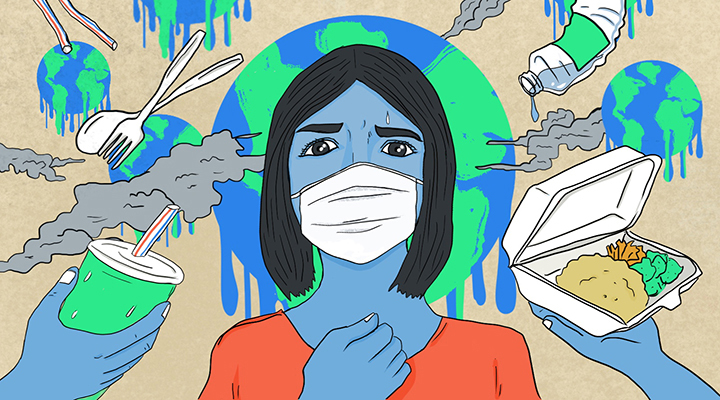Although climate change has been talked about for decades, it has become more pronounced in recent years. We turn on the television or surf the Internet and see how droughts affect us (especially in the Horn of Africa), glaciers are melting (by leaps and bounds), and a siphon hits the coast (across the pond). We are approached by news about the oceans of plastic.
Climate change is a reality and threatens our future in the medium and long term on Earth. This unstoppable problem has a significant impact on the population, especially young people, which generates a feeling of anguish and impotence due to current and future changes. And it has given rise to the appearance of a related disorder, eco-anxiety, which manifests itself with rapid pulse rate, sweating, a feeling of emerging fear…
What are the causes of eco-anxiety?
We can define eco-anxiety as the adaptive disorder that appears when observing and experiencing the planet’s deterioration due to human intervention and climate change.
The American Phycologist of America (APA) describes eco-anxiety as the chronic fear of environmental cataclysm as we look at the seemingly irrevocable impact of climate change and the associated worry about the future.
Generally, this type of anxiety is more frequent in young people, activists, and environmentally aware.
This concept relates to solastalgia, defined as the psychological disorders that appear in a native population due to destructive changes in its territory. The difference between concepts (eco-anxiety and solastalgia) lies in whether or not the natural disaster has been experienced.
What are the main symptoms, and how can we identify them?
Behind eco-anxiety, very diverse emotions are hidden:
Fear of the deterioration of the planet and its consequences shortly, in us and future generations.
Sadness for observing and living the negative changes on our planet.
Frustration for not covering a large radius of action because we can only do what is in our hands.
Anger and anger at not being able to control the changes since they do not depend on us.Therefore, the main symptoms are anxiety, nervousness, fear, and sadness. Sweating, tachycardia, and even insomnia may appear. In more severe cases, depression, frustration and anger, difficulty relating to other people, and even anger with those we think do not give it the importance it deserves.
What can we do when it appears?
Guidelines for coping with anxiety and alleviating symptoms:
Foster resilience is the ability to overcome an adverse event. What improves post-traumatic stress and depression after suffering a natural disaster. We can increase our strength by enhancing relationships with family and friends, accepting help, seeing the less negative aspects, and trusting our ability to resurface.
Promote a positive vision: positive people tend to feel better than those who remain engrossed in the negative aspects since they better manage their thoughts, emotions, and behaviors. Taking out the positive helps us not to stay in the complaint, suffering, and frustration.
Promote active coping and improve self-regulation: seek help from a professional when necessary, as they can give us guidelines to enhance our self-regulation of emotions.
Promote physical and mental preparation for the disasters that could happen.
Improving our psychosocial support network: maintaining and enhancing our relationships with family, friends, and other peers enhances the ability to overcome trauma.
Whenever possible, stay connected to the place: feeling connected makes us more adaptable and improves our resilience.
Do our bit against climate change: this reduces the feeling of guilt. Lead and promote a healthier life and an eco-sustainable style, such as committing to sustainable means of transport such as cycling, not using plastic containers, avoiding polluting actions, or making responsible use of water.What you should know…
We can define eco-anxiety as the anxiety that appears when observing and experiencing the planet's deterioration due to human intervention and climate change.
The main symptoms are anxiety, nervousness, fear, sadness... We can have sweating, tachycardia, insomnia... In more severe cases, depression, frustration, and anger can appear, as well as difficulty relating to other people and even irritation with those we think we don't. They give it the importance it deserves.
Foster our resilience and a positive attitude and trying to do our bit of sand towards a more sustainable and healthy lifestyle... can help manage this disorder better and alleviate its symptoms.





























Add Comment